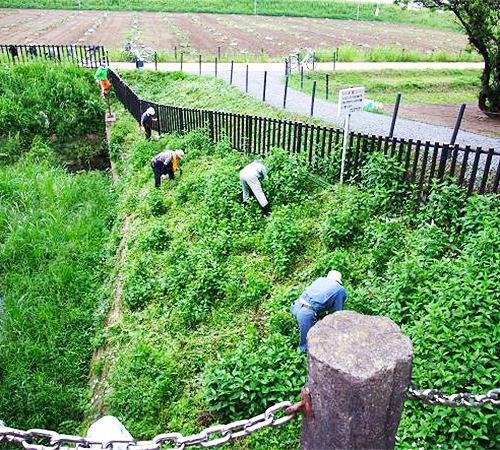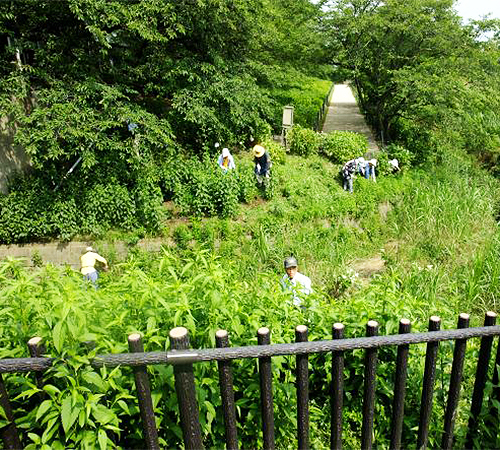About natural habitats of Fujibakama
Fujibakama natural habitat protected by the Satte nature protection society.

What is Fujibakama?
It is a perennial plant belonging to the genus Eupatorium of the Asteraceae family.
It has glossy and 3 lobed leaves, and is 1 to 1.5m tall.
It blooms small pale purple flowers.
Origin of name
The name “Fujibakama” comes from the fact that the flower color is mauve and the shape of each individual flower resembles a hakama (ancient hakama from the Asuka and Nara periods, now known as the shin part of pants). However, since it is already called “Fujibakama” in Manyoshu, the origin of the name may have been different.
Endangered Fujibakama
It is one of the seven autumn herbs mentioned in Manyoshu. The flowers are mauve-white, and since the Heian period, they have been popular as wild grasses that bloom in riverbeds and fields.
Dried Fujibakama was also used as a fragrance, and it seems that women in the olden days would put Fujibakama in incense bags and wear it in Junihitoe.
やどりせし 人のかたみか 藤袴 わすられがたき 香ににほいつつ
(我が家に泊まっていった人の残した形見か、藤袴よ。忘れがたい香にしきりに匂って…)
紀貫之・古今和歌集
This is a representative poem that called out the scent of Fujibakama.
However, in recent years, Fujibakama has continued to decline due to environmental changes such as river improvement, and is treated as an object of protection and conservation by the Ministry of the Environment and Kyoto Prefecture.
Cultivated species (a hybrid of Fujibakama and Eupatorium) are available, but the wild species have completely disappeared.
Fujibakama is designated as a near-threatened species by the Ministry of the Environment.

What is Fujibakama Omamori-tai?
Gongendo’s Fujibakama has always been protected in this natural habitat by members of the “Satte Nature Observation Club” at that time.
After that, the name of the association was changed to “Satte Nature Conservation Association”, and its activities started in May 2005, and have continued to this day. Commonly known as the “Fujibakama Omamori Squad,” we carry out conservation activities centered on weeding on the second Tuesday of every month from April to October.
To protect Fujibakama
The grassland, which is the environment where Fujibakama grows, continues to be a grassland by mowing every year. If you don’t mow the grass, trees will grow in two or three years and eventually it will become a forest.
Fujibakama cannot live in the forest.
The only places that have remained grasslands for many years are now river banks.
The embankment is a place controlled by humans.
The fact that Fujibakama, which should normally grow in natural grasslands, grows only on embankments managed by humans means that there is no other environment that is always a grassland.
It’s a bit strange that humans have to keep mowing the grass to save the endangered Fujibakama, which has nowhere to go.
